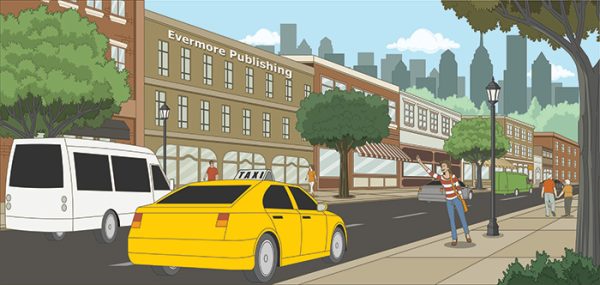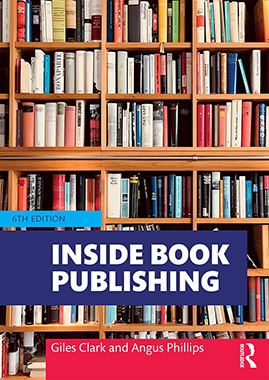How to Get Your Children’s Book Published
Step #4: Main Characters in Publishing
After last issues’ long post about publishing companies, it’s time to briefly talk about the main characters within and around those publishing companies. These are the people who will help get your book to market and work to make it a success. When I was new to this business, people threw around terms like “editor,” “art director,” “agent” and though I pretended, I really had no idea who or what they were talking about! I hope this post saves you the embarrassment I felt, and piques your interest to learn more, because there is always, always more to learn!
This post will address only those folks in the publishing industry that authors interact with regularly. There are hundreds of folks involved in getting a book printed and to market, but while production and sales, for example, are ESSENTIAL, as an author you will rarely interact with the people in those roles. Let’s concentrate on basic definitions for those folks you will talk to on a consistent basis.

AGENT
represents you as an author (and/or illustrator) and sells your work throughout the industry nationally or worldwide. For their services, they typically earn a 15% commission. There are still some publishers who acquire un-agented manuscripts, especially in the picture book genre. Personal note: my first three picture books were sold without an agent.
EDITOR
Oversees the book project from initial acquisition through final production and beyond. Typically, an author’s first and main contact. The editor focuses on the overall meaning and marketability of your text and helps turn your manuscript into a book people want to read. They also promote you and your book(s) within the publishing company and the industry.
COPYEDITOR
Focuses on the technical aspects of your document: grammar and punctuation but also consistency, repetitions, language use and meaning, fact checking, etc. This can be a department not just one person so multiple copyediting passes are to be expected.
ART DIRECTOR
Responsible for the overall visual look of the final book. This person supervises a team that will together produce the cover, interior illustrations or photographs, book and page layouts, typefaces, etc. Depending on the contract and experience, the author may or may not get input on visual matters.
PUBLICIST
Plans and runs the campaigns to promote your book, including online, print, TV, radio, blogs, etc. both general and industry specific. Also may handle press releases, book tours and appearances depending on book success and budget.
MARKETING MANAGER
Plans the advertising for the book to specific markets, like libraries, schools, retailers, book subscriptions, etc. They produce any materials (ex: ads, bookmarks, t‑shirts, mugs, videos) to reach those markets, also can include social media graphics for TikTok, YouTube, Facebook, to target markets. Yes, there is overlap with publicity; but the entire publishing team usually works together well.
Ta-da! Those are your main publishing characters defined. I’m going to include two more to know early on in your writing journey. One for picture book, board book or graphic novel authors, the second for all authors.
ILLUSTRATOR
Responsible for producing the art in a board book, picture book or graphic novel. This person brings your text to life and tells at least the other half of your story. You may not meet or even be contractually allowed to speak with them about the book. Trust them anyway. An illustrator is your partner, so you should always (in interviews, at conferences, or speaking engagements) give them the credit they deserve for creating the book with you.
REVIEWERS
read your book pre-publication and give their opinion for the general public or specific markets. There are 5 major traditional review publications for children’s books: Kirkus Reviews, The Horn Book, School Library Journal, Booklist, and Publishers Weekly, but the review industry is changing. Many newer review sites and formats exist, some like TikTok, #BookTok, Amazon, and Goodreads are essential. The process of getting books to reviewers is typically handled at the publisher. A starred review from the main reviewers is important and gratifying, but authors need to remember 1) any review is one person’s opinion, and 2) do not comment directly as the author to any review or reviewer of your book. Check with your agent or editor first if you have issues with a specific review and they will advise you on a course of action.
 An in-depth explanation of more of the characters at the publisher can be found here. And here is a book that covers the whole industry if you’re someone who likes to know practically everything before you start.
An in-depth explanation of more of the characters at the publisher can be found here. And here is a book that covers the whole industry if you’re someone who likes to know practically everything before you start.
Inside Book Publishing by Angus Phillips and Giles Clark. A thorough guide to book publishing. Whether on Kindle or in print, this is a very expensive publication, so try your local library loan department. Totally worth reading if you want to know all the details across publishing sectors and across the world.
Now that you know your main characters, next time we’ll cover the steps in the book production process or what you will actually do as an author. Until then, as always, keep writing!
Tag You’re It, the series …
Step #1, Believe
Step #2, Know What You’re Writing
Step #3, The Publishers
Step #4, Main Characters in Publishing
Step #5, The Book Process
Step #6, Writing Story
Step #7, Fixing It
Step #8, Don’t Stop … Believing
